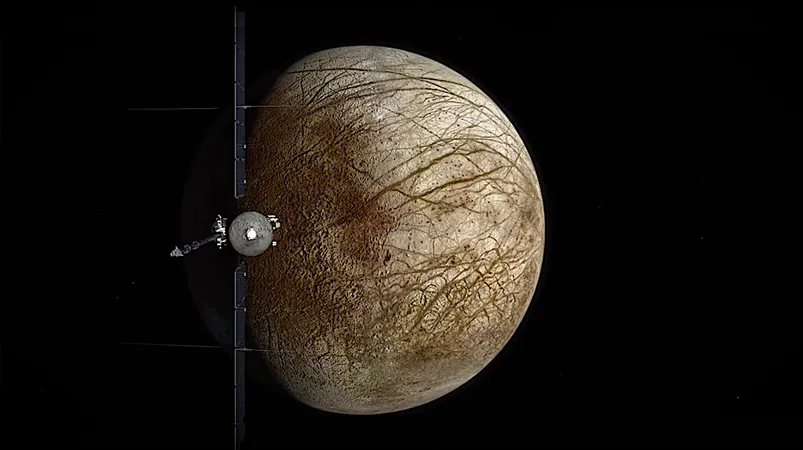
Europa Clipper Mission: Safeguarding Jupiter's Icy Moons from Earthly Contamination
2024-10-31
Author: Jia
Introduction
The Europa Clipper mission is on a groundbreaking quest to uncover the secrets of Jupiter's moon, Europa, and assess its potential for harboring life. However, an equally pressing challenge is to prevent any biological contamination from Earth, which could compromise the mission's findings and the pristine conditions of Europa's icy environment.
Planetary Protection Guidelines
In accordance with NASA’s stringent Planetary Protection (PP) guidelines, the Europa Clipper mission aims to ensure that the probability of inadvertently contaminating any oceanic body on Europa remains below 1 in 10,000 per mission. This directive stems from the necessity to avoid introducing any viable Earth microorganisms into the moon's liquid water beneath its icy crust.
Probabilistic Risk Assessment
To adhere to these requirements, the mission team at NASA’s Jet Propulsion Laboratory has developed a robust probabilistic risk assessment (PRA). This sophisticated evaluation process meticulously examines unlikely yet possible scenarios that could lead to contamination. The PRA focuses on spacecraft failure scenarios, geological resurfacing timescales that may expose Earth-based microbes to Europa’s subsurface ocean, and the survival of these microorganisms during the spacecraft's journey through space.
Challenges in Compliance
The urgency of this assessment is underscored by previous mathematical models that fell short in guiding bioburden reduction protocols. In fact, achieving a stringent 13-log reduction in microbial presence before launch has been identified as necessary if the only method of compliance is through hardware sterilization—a solution fraught with challenges, as contemporary spaceflight electronics may not withstand such rigorous sterilization without compromising their functionality.
Future Considerations
Moreover, the Europa Clipper team is not only focused on sterilization but rather aims to demonstrate that the probability of inadvertently impacting Europa and delivering a fragment of hardware is exceedingly low. They estimate such an unlikely sequence of events resulting in contamination could stretch beyond the next millennium, specifically not resurfacing before the year 3000.
Conclusion
This comprehensive PRA offers improvements over previous models by providing a mathematically rigorous, interdependent approach to quantify the risk of transferring viable biological material between planetary bodies. Such advancements could pave the way for future missions—like the proposed Europa Lander and Mars Sample Return—that will also be mandated to conduct rigorous planetary protection assessments.
In conclusion, the Europa Clipper mission is at the forefront of not just space exploration but also safeguarding the integrity of extraterrestrial environments. As we delve into the icy depths of Europa, maintaining our planetary responsibility becomes paramount, ensuring that our quest for knowledge does not come at the cost of these uncharted worlds. Stay tuned as this mission unfolds, potentially revolutionizing our understanding of life beyond Earth!



 Brasil (PT)
Brasil (PT)
 Canada (EN)
Canada (EN)
 Chile (ES)
Chile (ES)
 España (ES)
España (ES)
 France (FR)
France (FR)
 Hong Kong (EN)
Hong Kong (EN)
 Italia (IT)
Italia (IT)
 日本 (JA)
日本 (JA)
 Magyarország (HU)
Magyarország (HU)
 Norge (NO)
Norge (NO)
 Polska (PL)
Polska (PL)
 Schweiz (DE)
Schweiz (DE)
 Singapore (EN)
Singapore (EN)
 Sverige (SV)
Sverige (SV)
 Suomi (FI)
Suomi (FI)
 Türkiye (TR)
Türkiye (TR)